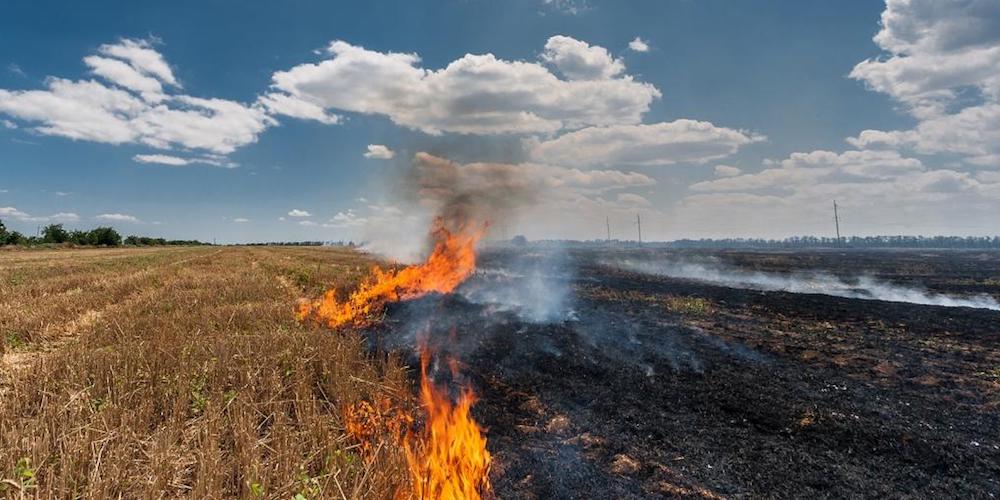Dealing with Stubble Burning

By stopping paddy cultivation in Punjab, crop burning will not stop. Why? Because residues of many crops are burnt across India and this practice is increasing everywhere. Neither is it possible to use paddy straw for power or industry beyond a point. Because other biomass burns better, and there are better and more efficient biomass inputs for paper, board, manure, etc. Also, manufacturing processes that use the straw cannot store the seasonal crop for the rest of the year as it is costly to collect, transport, and store, and worse, it decays. Other biomechanical solutions like zero till drilling and hastening decay of straw through enzyme spraying also can’t work well; who will bear the costs and also the risks? Finally, merely providing subsidies and incentives won’t help because it is impossible to monitor and enforce the lakhs of farmers spread across rural areas.
There is only one solution and it requires three mechanisms to operate simultaneously, if even one fails it will not work, and all three need to operate in tandem. First, reward the farmer for not burning, and this reward has to be equal to, or greater than, the cost of clearing the field of the straw (Rs 3-5,000 per acre). If you just give the funds with no monitoring, some farmers will take the funds and burn the straw anyway.
Second, we need to monitor crop burning using satellites or LIDARs and this field-level information needs to be shared with the Panchayat. No, such information cannot be used to punish the farmer, and it is not clear how the courts will rule on satellite-based information, moreover even satellite imagery is not perfect. Therefore, the third piece is the key. Share this information with the Gram Panchayat, where the reward to the Gram Panchayat will need to rise disproportionately with the area not burnt. The Panchayat will then be incentivized to take on the task of enforcement.
There can be variations to this. This is my favorite. The reward for not burning to each farmer can be based on whether other farmers burnt in his vicinity. If no other farmer in his village burns, the reward is highest. Such a system will motivate the farmers to prevent their neighbors from burning and help them in clearing their fields. But this may be tough to implement, no one in the administration today can take on the arguing and the negotiating with an assembly of farmers.
Therefore, it is better to reward the Panchayat over and above the farmer as this will incentivize the Panchayats to enforce. If you think out of the box, you can bring in the local gurdwaras and temples and deras and khaps – but the non-religious types won’t like that.
Punishment can also replace rewards conceptually, but will not work given Indian realities. Many farmers are poor and there are lakhs. So, a punishment-based mechanism will tend to be partially implemented, which will only give rise to corrupt behavior in the administration, and of course, there is the human rights angle. California successfully has almost eliminated rice straw burning based on a combination of laws and by bringing in the rice industry as an active participant. But their farms are much larger, richer, and more organized; this therefore can’t work in India.
How much will a purely rewards-based mechanism cost? About 80 lakh acres in Punjab are under paddy give or take a few. At Rs 4,000 an acre to the farmer, it works out to be about Rs 3,200 crores. Add half of that for Panchayats and some administrative costs and we get a figure of about Rs 5,000 crores. Add a similar amount for northern Rajasthan, western UP, and Haryana and back-of-the-envelope calculations are in the vicinity of Rs 10,000 crores.
So we end with the question, is Rs 10,000 crores worth it?



